Introduction
Face masks have transcended their utilitarian origins to become an integral part of fashion, serving both functional and expressive purposes. Historically, masks have been used to conceal identities at masquerade balls and in various cultural ceremonies worldwide, reflecting societal status and personal identity. This tradition continues in contemporary society, where the recent surge in custom face masks has transformed these protective items into canvases for artistic expression and branding.
The COVID-19 pandemic accelerated this trend, turning masks into personalized fashion items that communicate individuality and resilience. From luxury fabrics to high-tech materials, the evolution of face masks highlights the seamless blend of utility and aesthetics, mirroring broader trends in fashion towards sustainability and functionality. As face masks cement their place in modern wardrobes, they symbolize not just protection but a unique fusion of health, style, and identity.
Historical Context of Face Masks in Fashion
Face coverings have consistently played a significant role in fashion, serving both functional and expressive purposes. Historically, disguises were used in masquerade balls to conceal identities, allowing individuals to project an aura of mystery and elegance. This duality of protection and self-expression is evident in various cultural ceremonies across the globe. For instance, in Renaissance Florence, clothing was a potent political tool. Cosimo de' Medici, known for his sober public attire, projected authority and controlled his family's image through portraits by Agnolo Bronzino. Similarly, the kimono in Japan evolved with intricate designs reflecting societal status, especially during the Edo period, where samurai warriors wore kamishimo adorned with small-scale patterns for formal occasions.
Masks today continue this tradition of blending practicality with personal and cultural identity. Sharrona Pearl’s exploration of disguise politics highlights how these coverings can signify who we choose to protect and what values we hold dear. 'With the recent increase in personalized coverings, we see a contemporary interpretation of this ancient practice, where coverings become canvases for artistic expression and branding.'. This convergence of style and utility highlights the lasting importance of face coverings in our social and cultural environments.
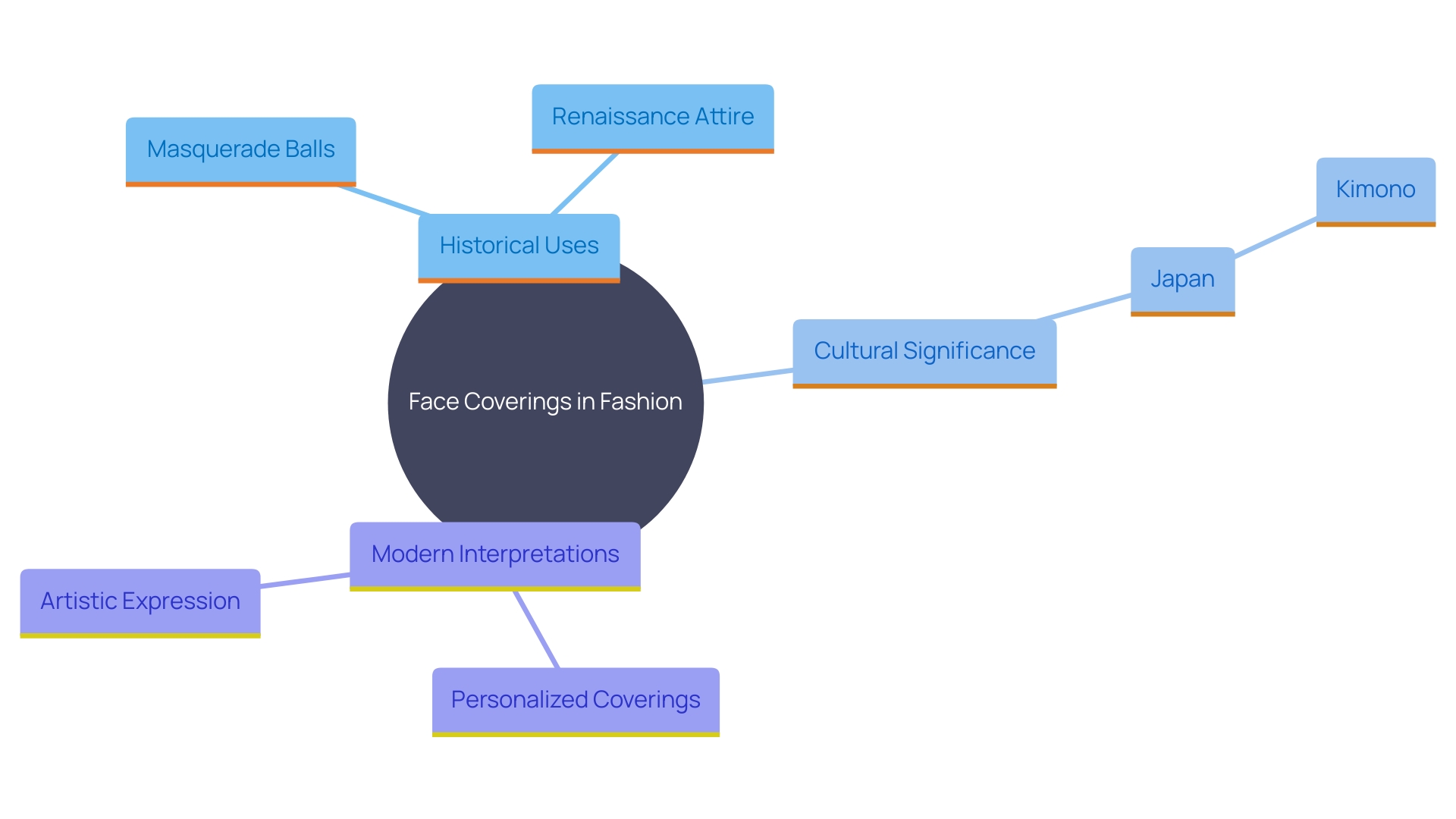
The Rise of Custom Face Masks During COVID-19
The COVID-19 pandemic brought an unprecedented surge in the demand for protective coverings, transforming them from health essentials to personalized fashion items. Individuals and brands alike began to explore creative designs, allowing for a unique expression during a time of uncertainty. 'Custom face coverings became a canvas for self-expression, featuring everything from vibrant patterns to personalized messages, reflecting the wearer's personality and values.'.
In Taiwan, Howard Wu exemplified the innovative spirit by creating a live map of available face covering supplies using Google Maps. This crowdsourced effort marked stores with green if they had supplies and red if they were sold out, including detailed stock levels for adult and child face coverings. This initiative received over 20 million views in just three months, showcasing how communities came together during the crisis.
As facial coverings evolved into a form of personal and collective expression, they also became an effective marketing tool. Companies like Brightshores provided complimentary face coverings at their facilities, emphasizing a dedication to safety and customer care. This blend of practicality and creativity transformed face coverings into powerful symbols of resilience and identity.
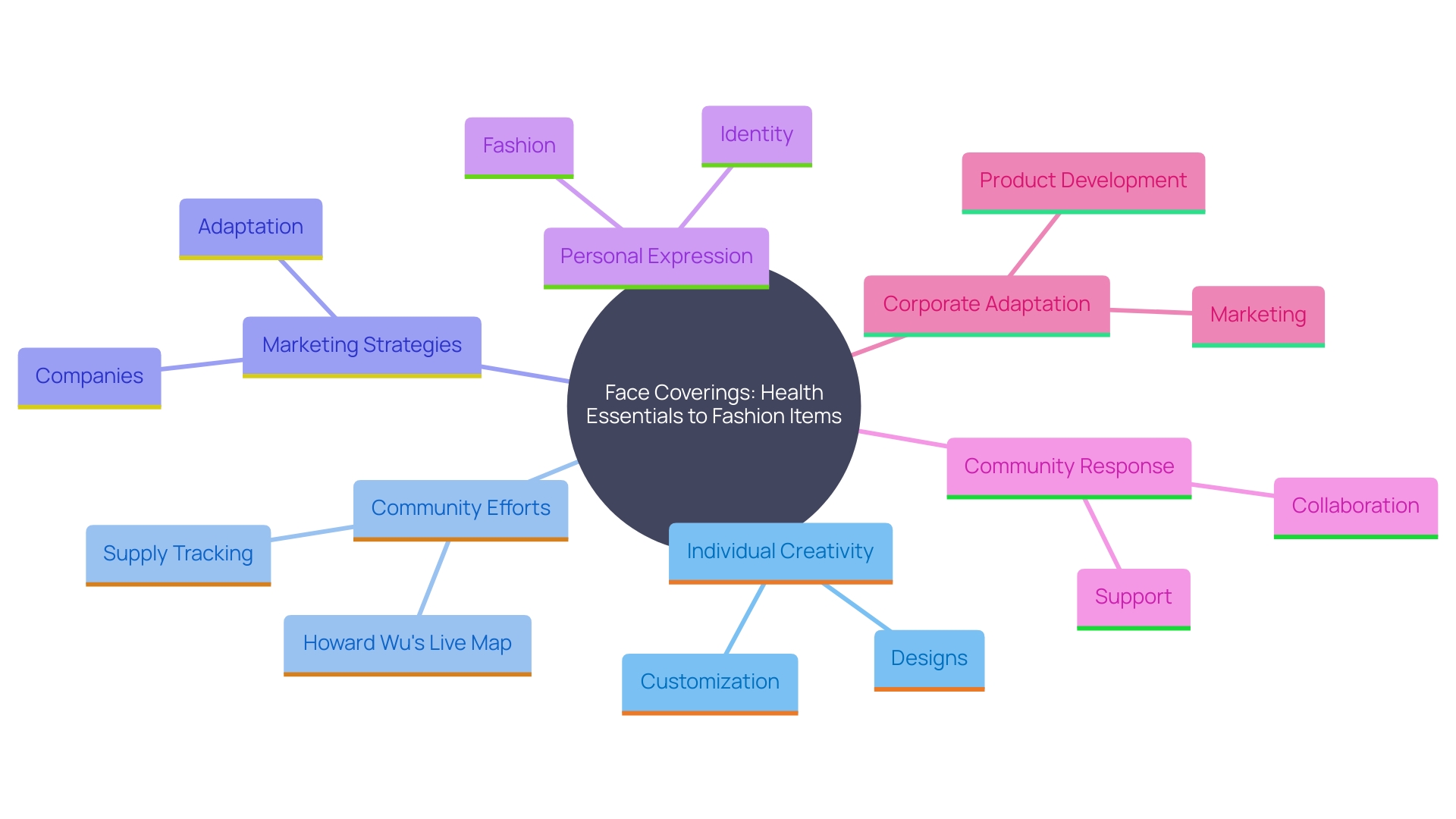
From Utility to Fashion Forward: The Transformation of Face Masks
As the globe adjusted to updated health regulations, facial coverings transformed considerably in style and utility. What began as basic protective gear turned into fashion-forward accessories. Creators started to include luxurious textiles, inventive styles, and creative expression, transforming coverings into not merely a requirement but a striking style declaration. This transformation highlighted the blending of utility with aesthetics, showcasing that safety and style can coexist. This shift was not only about aesthetics but also about making statements—masks became sociocultural symbols, reflecting political and ideological beliefs, and sometimes even misinformation. The clothing sector took advantage of this chance, producing coverings that not only safeguarded but also conveyed identity and principles. This evolution in design also addressed environmental concerns with single-use items, pushing for sustainable materials and reusable options. The integration of style and practicality in facial coverings showcased a wider movement in fashion, where functionality and sustainability are becoming as essential as the aesthetic attraction.
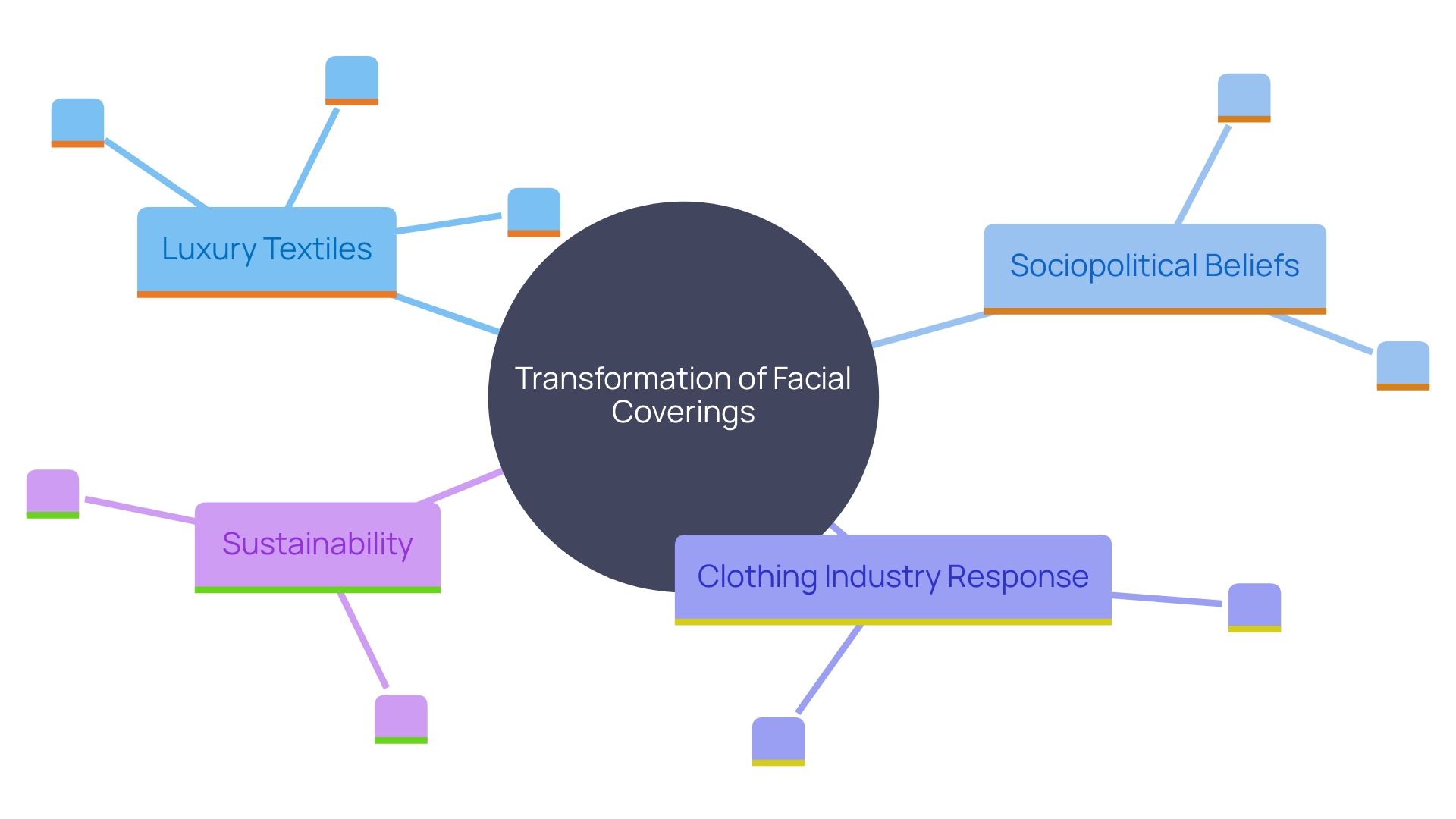
Innovations in Face Mask Materials and Technologies
Improvements in textile technology have changed the protective covering industry. Brands now employ high-performance materials that not only enhance filtration but also elevate comfort and wearability. Innovations such as moisture-wicking materials and antimicrobial treatments ensure that face coverings are not only practical but also fashionable. For instance, research on intelligent textiles shows that these materials can respond to external stimuli, offering solutions for safer and healthier lives. 'This incorporation of cutting-edge materials has made personalized coverings an essential element of contemporary attire, addressing both safety and style requirements.'. According to market reports, the demand for such high-tech, aesthetically pleasing face coverings is growing, further solidifying their place in everyday use.
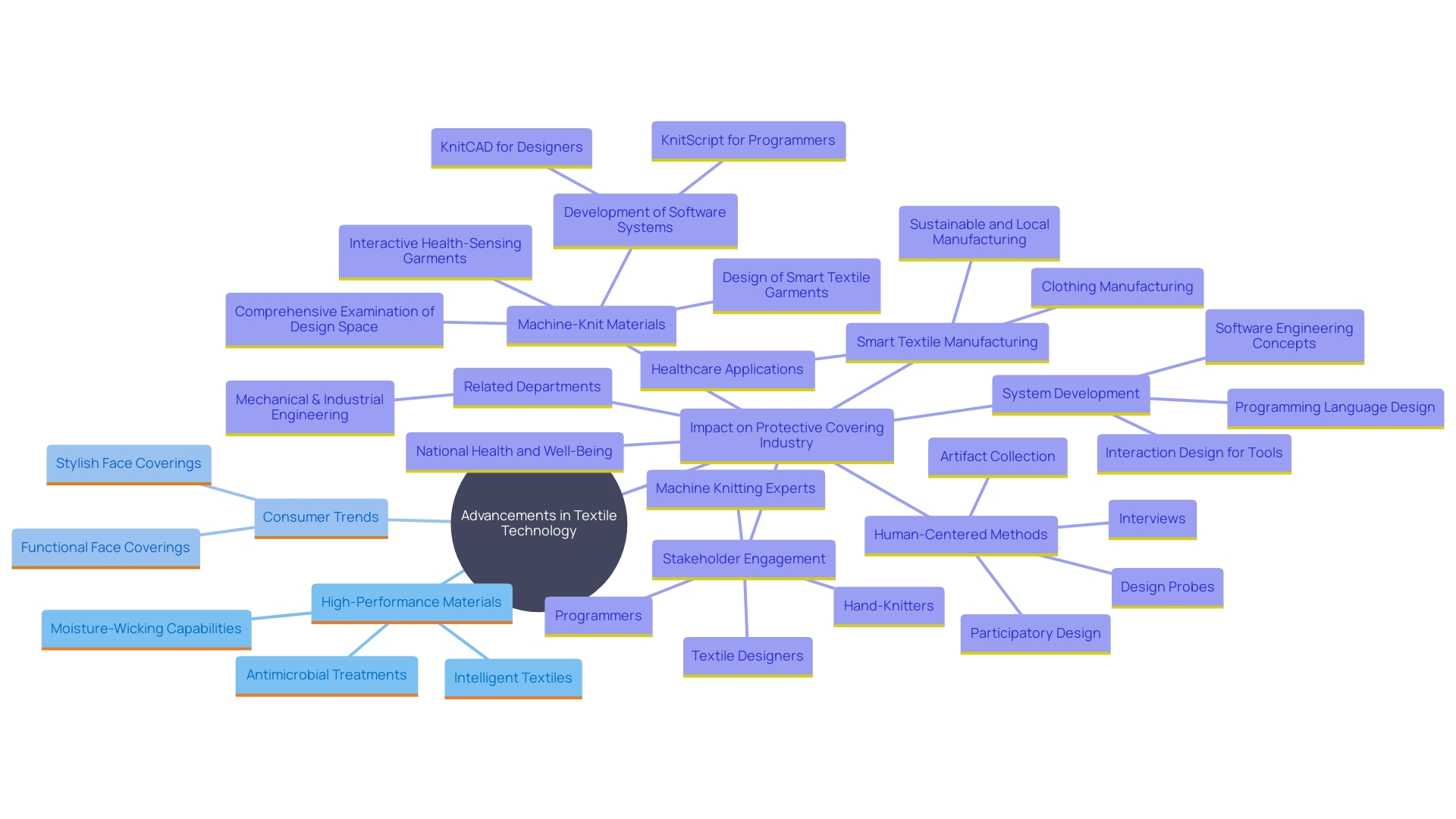
The Impact of Face Masks on Contemporary Fashion
The increase of personalized facial coverings has greatly transformed modern style trends. Designers and retailers have swiftly adjusted, incorporating face coverings into their collections as essential accessories that enhance outfits. This evolution has ignited lively conversations about the function of facial coverings in visual narratives within the clothing industry, pushing boundaries and encouraging creativity.
Masks have now become symbols of resilience and adaptability, blending functionality with personal style. As designer Demna emphasized, genuine luxury today is creativity itself, and personalized facial coverings are a testament to this idea. They offer a new canvas for expression, much like how the cognitive dress at the Met Gala changed colors in response to fans’ emotions, making each moment interactive and unique.
Moreover, the demand for these personalized accessories has surged, with consumers lining up outside stores for exclusive designs, echoing the commercial strategies of limited-edition luxury goods. This trend highlights how face coverings have surpassed their functional role, becoming crucial components in style that represent the wearer's identity and the spirit of the time.
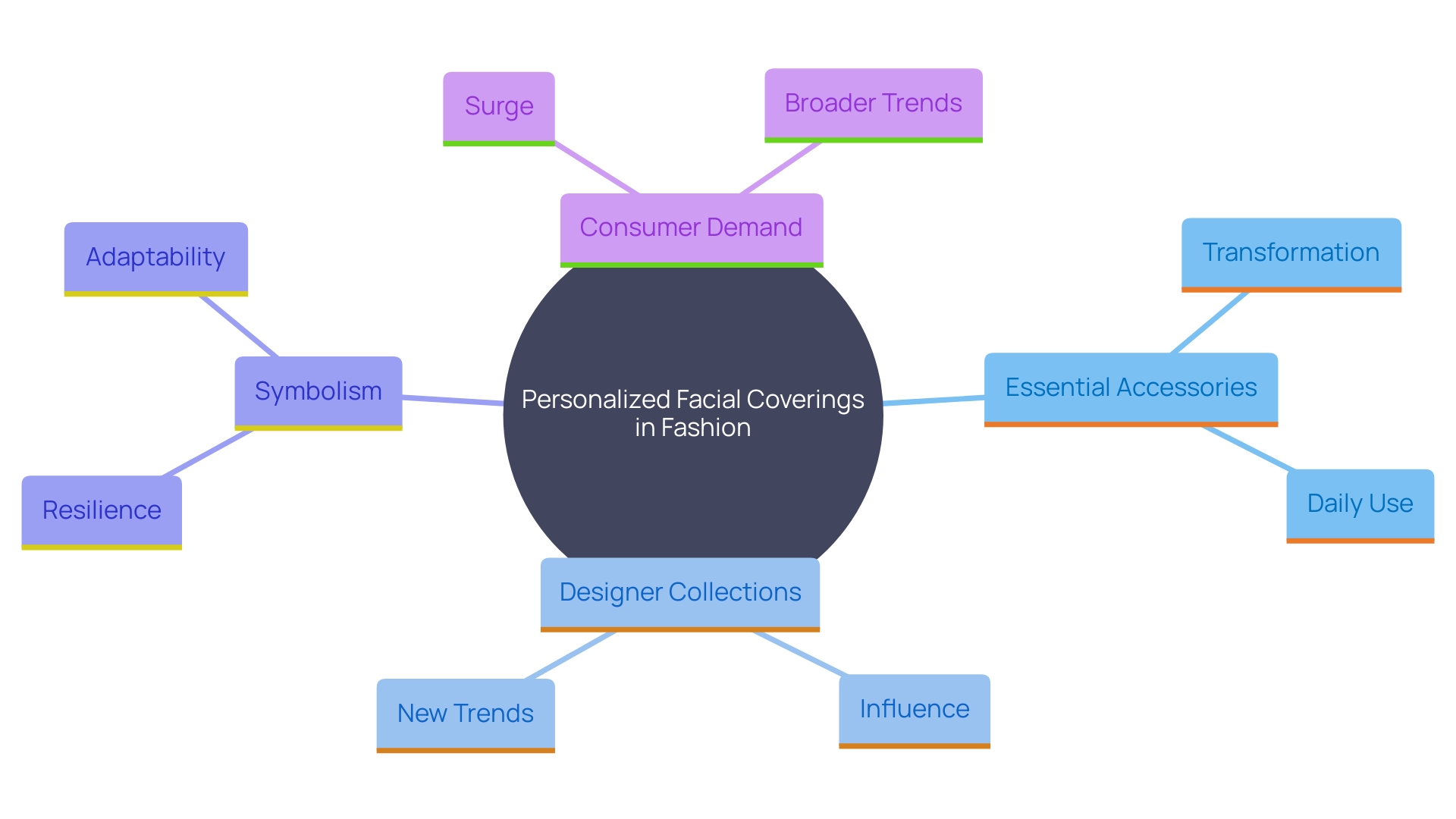
The Future of Custom Face Masks in Fashion
Looking ahead, the future of custom face masks in style appears bright. As consumer preferences continue to evolve, there will likely be a sustained interest in personalized and innovative designs. Brands may increasingly focus on sustainability, utilizing eco-friendly materials and ethical production methods, further aligning fashion with consumer values. The potential for face masks to remain as a staple accessory in wardrobes suggests they will continue to play a vital role in the intersection of health and style.
Conclusion
Face masks have undeniably transformed from mere health essentials into significant fashion statements, merging functionality with personal expression. The historical context reveals a rich tapestry where masks have served not only as protective gear but also as symbols of identity and societal values. This tradition continues to thrive today, as masks evolve into canvases for artistic expression, reflecting individual personalities and collective resilience.
The COVID-19 pandemic catalyzed this shift, prompting creativity and innovation in mask design. Custom face masks emerged as essential accessories, showcasing vibrant patterns and unique messages that resonated with a diverse audience. This trend not only exemplified adaptability in challenging times but also highlighted the importance of community and connection through shared experiences.
As the fashion industry embraces this evolution, the integration of advanced materials and sustainable practices signals a promising future for custom face masks. They are set to remain integral to wardrobes, balancing health and style while continuing to reflect the ever-changing landscape of consumer values. Ultimately, face masks symbolize more than protection; they embody a unique fusion of identity and resilience in contemporary culture.




